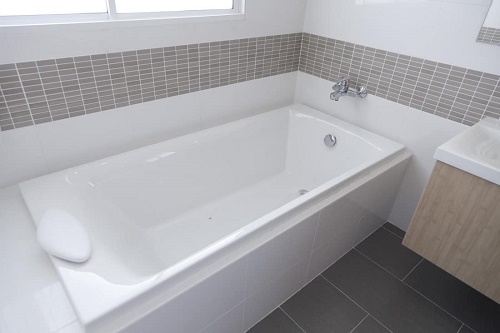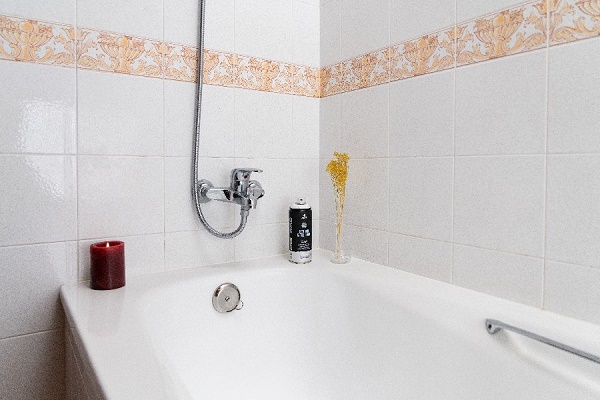What to Use to Remove Paint from Bathtub: A Comprehensive Guide
Discovering unwanted paint on your bathtub can be frustrating and unsightly. Whether it’s accidental splatters or an old paint job that needs to be removed, it’s essential to use the right methods and tools to avoid damaging the bathtub’s surface. In this comprehensive post, we’ll walk you through various effective and safe ways to remove paint from your bathtub. From DIY remedies to professional-grade products, we’ve got you covered.
1. Identify the Type of Paint
Before starting the paint removal process, identify the type of paint on your bathtub. Enamel, acrylic, oil-based, or water-based paints each require different removal methods and solvents. If you’re unsure, conduct a simple spot test in a discreet area to determine the best approach.
2. Gather the Necessary Supplies
To successfully remove paint from your bathtub, you’ll need the following supplies:
- Safety Gear: Wear protective gloves, safety goggles, and a mask to shield yourself from paint fumes and chemicals.
- Paint Scraper: Use a plastic or metal paint scraper to gently lift and remove loose paint.
- Soft Cloth: A soft cloth or sponge will come in handy for wiping and cleaning the surface.
- Solvents: Choose an appropriate solvent based on the type of paint you’re removing. For water-based paints, use warm, soapy water. For oil-based paints, opt for mineral spirits or denatured alcohol.
- Citrus-based Remover: Citrus-based removers are an eco-friendly option for removing paint from bathtubs. They are generally less toxic and effective in removing paint.
3. Start with Gentle Methods
Begin the paint removal process with the mildest methods to minimize any potential damage to the bathtub surface.
- Warm, Soapy Water: For water-based paint, start by soaking a soft cloth or sponge in warm, soapy water. Gently rub the painted areas in a circular motion to loosen the paint.
- Citrus-based Removers: Citrus-based removers are an eco-friendly and effective option for removing water-based paints. Apply the remover to the painted areas and allow it to sit for a few minutes. Then, use a paint scraper to lift the softened paint.
4. Use Solvents for Stubborn Paint
If water-based paint remains stubborn, try using mineral spirits or denatured alcohol for oil-based paint.
- Mineral Spirits: Apply a small amount of mineral spirits to a clean cloth or sponge. Gently dab the painted areas, ensuring not to oversaturate the surface. Use the paint scraper to remove the softened paint.
- Denatured Alcohol: For oil-based paint, soak a soft cloth or sponge in denatured alcohol and dab the painted areas. Let it sit for a few minutes before using the paint scraper to lift the paint.
5. Be Cautious with Tough Stains
For particularly tough stains or multiple layers of paint, consider the following methods:
- Sandpaper: Lightly sand the painted areas with fine-grit sandpaper. This method requires caution to avoid scratching the bathtub surface.
- Chemical Paint Strippers: If other methods don’t work, you may resort to chemical paint strippers. Ensure proper ventilation, follow the manufacturer’s instructions, and wear safety gear.
6. Test and Clean the Bathtub
Always test your chosen method on a small, inconspicuous area of the bathtub before applying it to larger sections. Once you successfully remove the paint, clean the bathtub thoroughly with warm, soapy water to remove any residue from the solvents or removers.
7. Prevent Future Paint Mishaps
To prevent future paint mishaps, take precautionary measures such as using drop cloths and painter’s tape to protect your bathtub during painting projects. If possible, remove hardware and fixtures before painting to avoid accidental paint splatters.

FAQs
Can I use regular paint removers on my bathtub?
It’s essential to use paint removers specifically designed for bathtub surfaces. Regular paint removers may contain harsh chemicals that can damage the bathtub’s finish.
Can I use a wire brush to remove paint from my bathtub?
Avoid using wire brushes or abrasive tools on bathtubs, as they can scratch and damage the surface. Opt for soft cloths, sponges, or plastic paint scrapers instead.
Is acetone safe for removing paint from bathtubs?
Acetone is a powerful solvent that can effectively remove paint, but it’s not recommended for use on bathtubs. It can damage the bathtub’s surface and cause discoloration.
What Does It Mean When Sewage Backs Up In Bathtub
How do I remove old and stubborn paint from my bathtub?
Old and stubborn paint may require multiple attempts with gentle methods such as warm, soapy water or citrus-based removers. If these don’t work, consider using mineral spirits or denatured alcohol for oil-based paints or seek professional help.
Can I use a heat gun to remove paint from my bathtub?
Using a heat gun on a bathtub is not recommended, as excessive heat can damage the surface and lead to costly repairs.
How can I prevent paint splatters in the future?
Prevent paint splatters in the future by using drop cloths, painter’s tape, and plastic sheets to cover the bathtub and surrounding areas during painting projects.
What should I do if the paint remover doesn’t work?
If the paint remover doesn’t work, try another method suitable for the type of paint on your bathtub. If all else fails, consider seeking professional assistance.
Can I repaint my bathtub after removing the old paint?
Yes, you can repaint your bathtub after removing the old paint, but ensure you use a bathtub refinishing kit or paint specifically designed for bathtubs.
Is it safe to use citrus-based removers?
Citrus-based removers are generally safe to use, but it’s still essential to follow the manufacturer’s instructions and wear protective gear.
Can I remove paint from a fiberglass bathtub?
Yes, you can remove paint from a fiberglass bathtub using gentle methods like warm, soapy water or citrus-based removers. Avoid using harsh solvents or abrasive tools that may damage the fiberglass surface.
Remember to always prioritize safety, wear protective gear, and test your chosen method on a small area of the bathtub before applying it to larger sections. If you encounter challenges or have concerns about the paint removal process, don’t hesitate to seek professional help. With the right approach and care, you can successfully remove paint from your bathtub and restore its original beauty.
Conclusion
Removing paint from your bathtub requires patience, the right tools, and proper techniques. Start with gentle methods such as warm, soapy water or citrus-based removers and progress to solvents for tougher paint. Always prioritize safety, wear protective gear, and test methods on a small area before applying them to the entire bathtub. If you encounter challenges or have multiple layers of paint, consider seeking professional help. With the right approach and care, your bathtub will be paint-free and restored to its original beauty.
